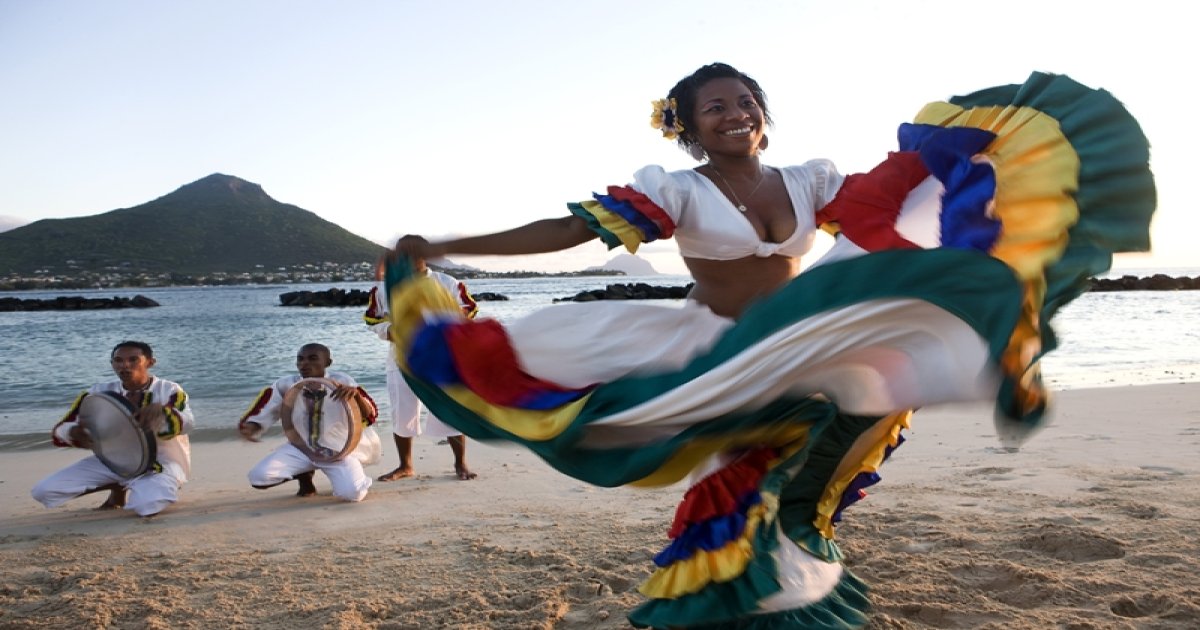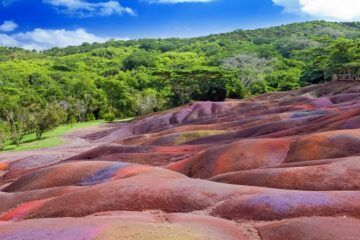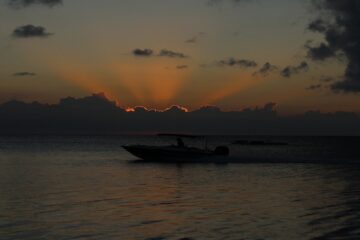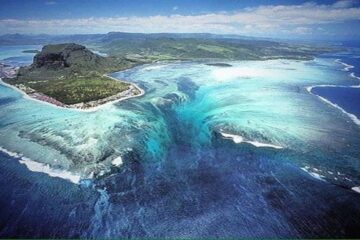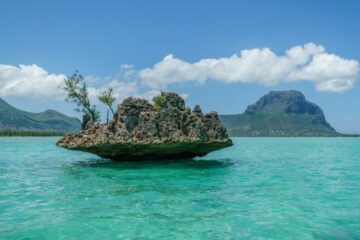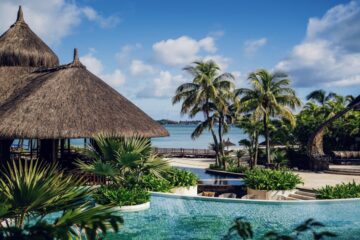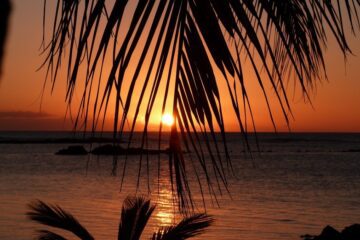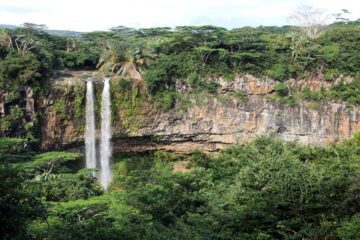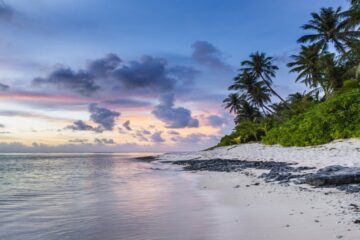Welcome to the tropical paradise of Mauritius, a mesmerizing island nation located in the Indian Ocean. Bursting with natural beauty, rich history, and vibrant culture, Mauritius is a destination that never fails to captivate its visitors. In this article, we will explore 15 fascinating facts about Mauritius island, from its rare stamps and stunning underwater waterfall illusion to its multicultural society and thriving sugar cane industry.
Mauritius is home to one of the world’s rarest stamps, known as the ‘Post Office Red.’ This stamp, with its vibrant red color and intricate design, is highly sought after by stamp collectors worldwide. Another awe-inspiring natural phenomenon found in Mauritius is the underwater waterfall illusion. Off the coast of the Le Morne Peninsula, a unique combination of ocean currents and sand deposits creates a mesmerizing optical illusion that resembles a cascading waterfall beneath the surface of the water. These are just a taste of the many intriguing facts that await you as we dive into the wonders of Mauritius.
1. The World’s Rarest Stamp: ‘Post Office Red’
You won’t believe your eyes when you see the world’s rarest stamp, the ‘Post Office Red’ – it will take your breath away! This stamp is a true collector’s dream, with only 27 known copies in existence. It was issued in Mauritius in 1847, making it not only rare but also incredibly old. The ‘Post Office Red’ stamp features the portrait of Queen Victoria and is known for its vibrant red color, which is why it is called ‘Post Office Red.’ The stamp was printed with a type of ink that was prone to fading, which makes the surviving copies even more valuable. In fact, it is estimated that a single ‘Post Office Red’ stamp can be worth millions of dollars!
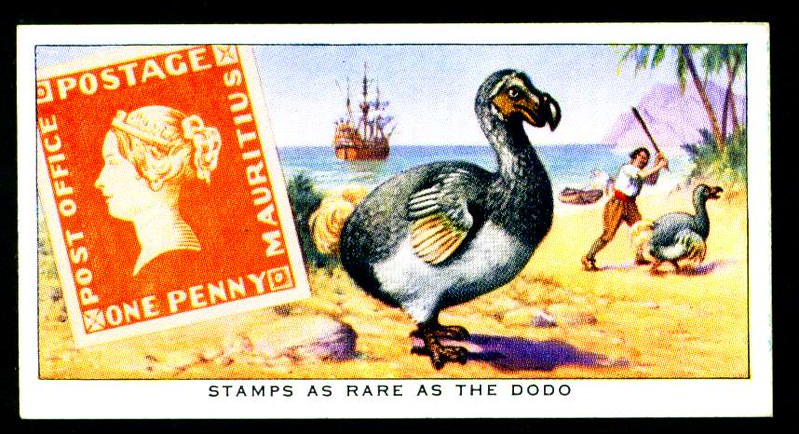
The story behind the ‘Post Office Red’ stamp is also captivating. It is believed that the stamp was accidentally printed when the local post office ran out of the usual blue ink. Instead of waiting for the new shipment, the postmaster decided to print a small number of stamps using the available red ink. Little did he know that this decision would lead to the creation of one of the rarest and most valuable stamps in the world. Today, the ‘Post Office Red’ stamp is a symbol of Mauritius’ rich history and has become a source of pride for the island nation.
The ‘Post Office Red’ stamp is a true marvel and a testament to the rich history of Mauritius. With only 27 known copies in existence, it is no wonder that this stamp is considered the world’s rarest. Its vibrant red color and unique backstory make it a coveted item among stamp collectors. Owning a ‘Post Office Red’ stamp would truly be a once-in-a-lifetime opportunity, as its value continues to increase with time.
2. The Stunning Underwater Waterfall Illusion
Breathtakingly, Mauritius showcases a stunning underwater waterfall illusion. Located off the coast of Le Morne Brabant, this natural phenomenon perplexes and mesmerizes visitors from around the world. From above, it appears as if a majestic waterfall is cascading down into the depths of the ocean. However, upon closer inspection, it becomes clear that what appears to be a waterfall is actually an optical illusion formed by sand and silt deposits.
The underwater waterfall illusion is created by the combination of strong ocean currents and the unique underwater topography of the area. The strong currents carry sand and silt from the shorelines and deposit them in a specific area, forming a visually striking contrast between the clear blue water and the sandy sediment. This creates the illusion of a waterfall plunging into the ocean depths. It is truly a sight to behold and a testament to the wonders of nature.
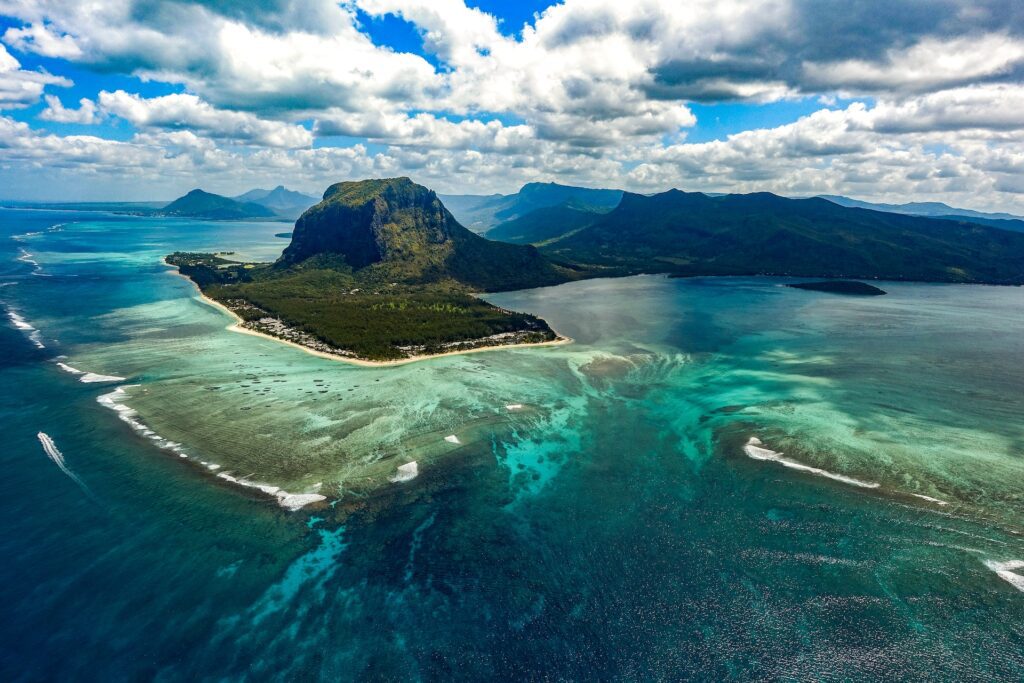
Visitors to Mauritius often take boat trips or helicopter rides to witness this incredible spectacle. The view from above provides a truly breathtaking perspective, as the illusion is even more pronounced. The swirling patterns and the contrast of colors create a mesmerizing visual experience that leaves a lasting impression. The underwater waterfall illusion is just one of the many natural wonders that make Mauritius a truly unique and captivating destination.
3. The Multicultural Society of Mauritius
Immerse yourself in the vibrant tapestry of cultures that coexist harmoniously in Mauritius, where the sights, sounds, and aromas of diverse traditions intertwine to create a truly captivating experience. As a multicultural society, Mauritius is home to a rich blend of ethnicities, including Indo-Mauritians, Franco-Mauritians, Sino-Mauritians, and Creole-Mauritians. Each community has its own unique customs, languages, and cuisines, which contribute to the multicultural fabric of the island.
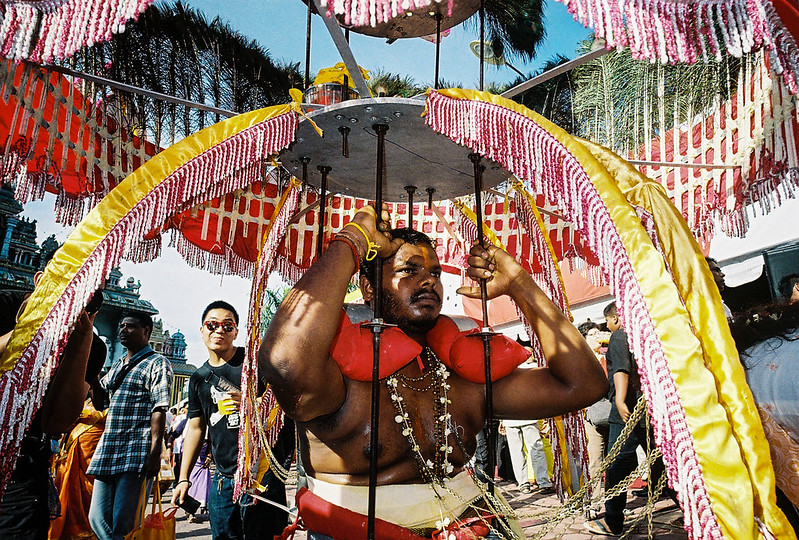
Indo-Mauritian community
The Indo-Mauritian community, which is the largest ethnic group in Mauritius, traces its roots back to the indentured laborers who were brought from India during the 19th and early 20th centuries. Their vibrant culture is reflected in the colorful Hindu temples, the melodious sounds of bhajans (devotional songs), and the aromatic flavors of their traditional cuisine.
Franco-Mauritian community
The Franco-Mauritian community, on the other hand, descends from the French settlers who arrived in Mauritius during the colonial era. They have preserved their French language and customs, and their influence can be seen in the charming French colonial architecture and the French-inspired gourmet cuisine.
Sino-Mauritian community
The Sino-Mauritian community, comprising of the descendants of Chinese immigrants, has also played a significant role in shaping the multicultural landscape of Mauritius. Their vibrant Chinese festivals, such as the Chinese New Year and the Dragon Boat Festival, are celebrated with great enthusiasm and provide a glimpse into their rich cultural heritage. Lastly, the Creole-Mauritian community, which has its roots in the African and Malagasy slaves brought to the island during the colonial era, has a distinct language, music, and cuisine. The lively sega dance, accompanied by the rhythmic beats of the ravanne and the maravanne (traditional musical instruments), is an integral part of their cultural expression.
In Mauritius, the fusion of these different cultures has resulted in a society that is tolerant, open-minded, and inclusive. The people of Mauritius take pride in their multicultural heritage and actively promote intercultural dialogue and understanding. Visitors to the island can experience this vibrant multiculturalism firsthand by exploring the diverse religious sites, attending cultural festivals, and indulging in a delightful culinary journey. The multicultural society of Mauritius is a testament to the power of unity in diversity and serves as a shining example for the world.
4. The Dodo Bird’s Extinction and Memorialization
The Dodo bird, a fascinating and now extinct creature, holds a special place in the history and culture of Mauritius. This bird was a flightless bird that was native to the island of Mauritius. It was first discovered by Portuguese sailors in the late 16th century and was later hunted to extinction by the 17th century. The extinction of the Dodo bird is a tragic story, as it is believed to be one of the first recorded cases of human-caused extinction. The Dodo bird’s slow and clumsy nature made it an easy target for sailors and settlers, who hunted them for food and sport.
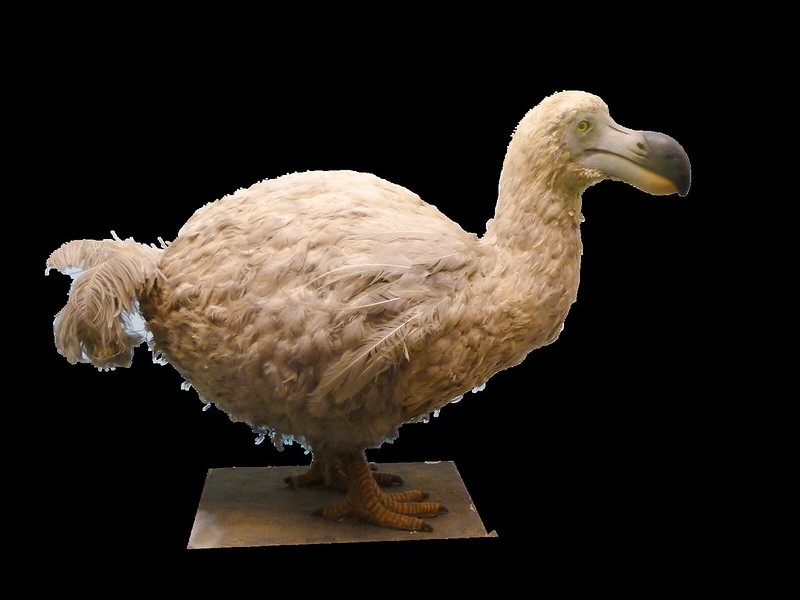
Despite its extinction, the Dodo bird is still highly celebrated and memorialized in Mauritius. The Dodo bird has become a symbol of the island’s unique biodiversity and the need for conservation. The image of the Dodo bird can be found on various items, such as stamps, coins, and souvenirs, and it is also featured in many artworks and sculptures throughout the country. In addition, there are several museums and exhibitions dedicated to the Dodo bird, where visitors can learn about its history and see replicas of the bird. The Dodo bird’s extinction has served as a reminder of the importance of preserving Mauritius’ natural heritage and has sparked efforts to protect and conserve the island’s remaining endemic species.
5. The UNESCO World Heritage Site – Le Morne Cultural Landscape
Located in Mauritius, the Le Morne Cultural Landscape is a UNESCO World Heritage Site that beautifully showcases the island’s rich history and cultural significance. This stunning site is located on the southwestern tip of the island and is known for its dramatic mountain, Le Morne Brabant, which rises abruptly from the surrounding turquoise waters. The mountain holds great significance as it served as a refuge for escaped slaves in the 18th and early 19th centuries. These slaves, known as Maroons, sought shelter in the mountain’s inaccessible caves and formed communities there, creating a unique cultural identity that is still celebrated today.
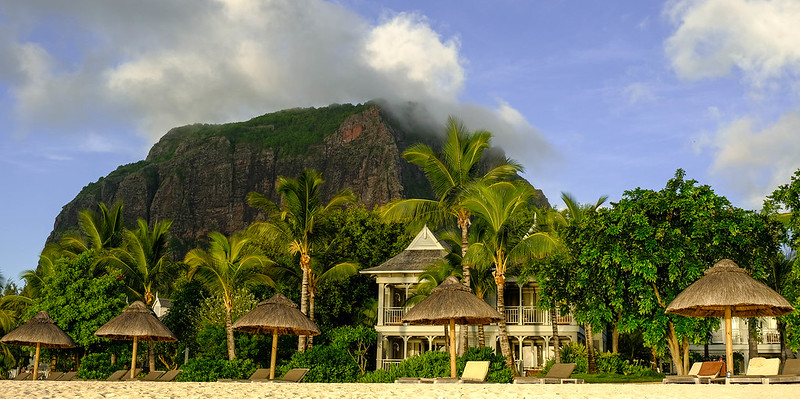
The Le Morne Cultural Landscape is not only significant for its historical and cultural value but also for its natural beauty. The mountain is surrounded by lush vegetation and is home to several endemic plant and animal species, making it a haven for biodiversity. Visitors can explore the area through various hiking trails that offer breathtaking views of the island and the Indian Ocean. The site also includes beautiful sandy beaches, where visitors can relax and enjoy the stunning scenery. With its combination of historical, cultural, and natural attractions, the Le Morne Cultural Landscape is a must-visit destination for anyone interested in experiencing the true essence of Mauritius.
6. The Seven Colored Earths of Chamarel
Experience the mesmerizing beauty of the Seven Colored Earths of Chamarel, where vibrant hues dance before your eyes in a natural spectacle that will leave you in awe. Situated in the southwest region of Mauritius, this geological wonder is a must-visit attraction for nature enthusiasts and curious travelers alike. The unique feature of the Seven Colored Earths is the distinct sand dunes that showcase a mesmerizing display of colors including red, brown, violet, blue, green, and yellow, all blending together to create a surreal landscape.
What makes this natural phenomenon even more fascinating is the fact that the colors of the sand dunes never seem to erode, despite the heavy rainfall in the area. Scientifically explained by the presence of different mineral compositions in the soil, the colors are a result of the volcanic activity that occurred millions of years ago. As the volcanic ash cooled down, it formed these colorful sand dunes, creating a truly picturesque sight. Visitors can stroll along the wooden pathways that allow for a closer look at the Seven Colored Earths, or simply admire the beauty from the designated viewing areas.
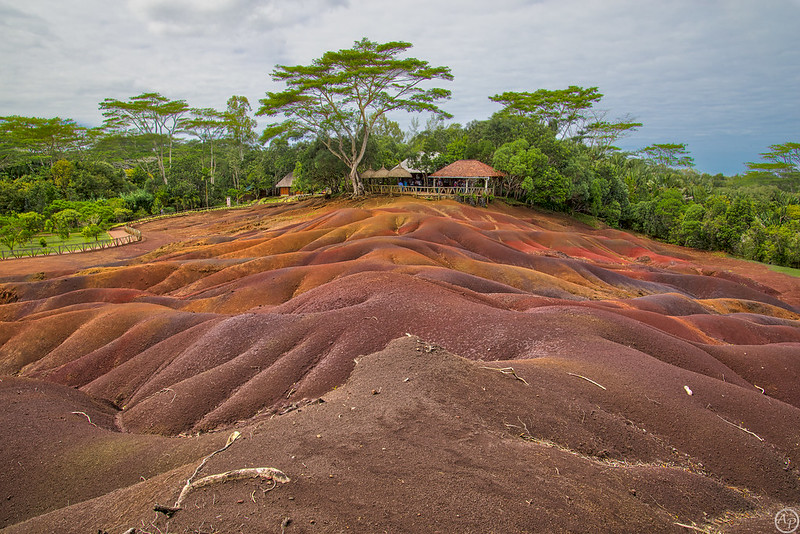
In addition to its visual appeal, the Seven Colored Earths of Chamarel also hold cultural significance for the locals. The site is considered sacred by the Mauritian people, who believe that the vibrant colors hold spiritual powers. Many visitors choose to collect small vials of the colored sand as a keepsake or a good luck charm. To preserve this natural wonder, the area is protected, and touching or removing the sand is strictly prohibited. The Seven Colored Earths of Chamarel offer a unique and enchanting experience, where nature’s artistry is on full display, leaving visitors with a sense of wonder and appreciation for the diverse beauty found in Mauritius.
7. The Aapravasi Ghat – A Symbol of Indentured Labor History
Step back in time and immerse yourself in the rich history of Mauritius at the Aapravasi Ghat, a poignant reminder of the hardships endured by indentured laborers. Located in Port Louis, the capital city of Mauritius, the Aapravasi Ghat was a landing depot for indentured laborers brought to the island from India and other parts of the world between 1834 and 1920. It served as a gateway for more than half a million indentured laborers who were brought to work in the sugarcane plantations of Mauritius.
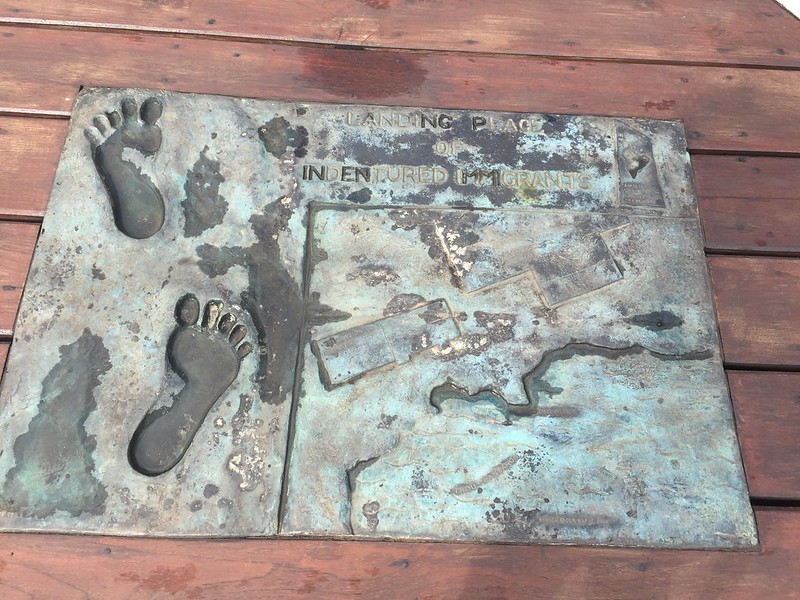
The Aapravasi Ghat is now a UNESCO World Heritage site and has been preserved as a museum that tells the story of indentured labor in Mauritius. As you explore the site, you can see the various buildings and structures that were used during the indenture era, such as the Immigration Depot, the Hospital, and the Quarantine Building. The museum displays artifacts and exhibits that provide insights into the living conditions, work, and struggles of the indentured laborers. It is a powerful experience that allows visitors to gain a deeper understanding of the history and heritage of Mauritius.
8. The Pamplemousses Botanical Garden and Its Rare Flora
Immerse yourself in the breathtaking beauty of the Pamplemousses Botanical Garden, where you’ll be captivated by the rare and exquisite flora that will leave you in awe. Spread over an area of 60 acres, this stunning garden is home to a wide variety of plant species, including some that are found nowhere else in the world. As you wander through the garden, you’ll come across towering palm trees, vibrant orchids, and fragrant spices, creating a sensory overload that is truly unforgettable.
One of the highlights of the Pamplemousses Botanical Garden is the Giant Water Lilies or Victoria Amazonica. These enormous lilies can grow up to 3 meters in diameter and have pads strong enough to support the weight of a small child. Seeing these magnificent water lilies floating gracefully on the surface of the pond is a sight to behold. Another rare and fascinating plant you’ll encounter is the Talipot Palm, which only flowers once in its lifetime and then dies. Its gigantic inflorescence can reach up to 6 meters in height, making it one of the most impressive floral displays in the world.
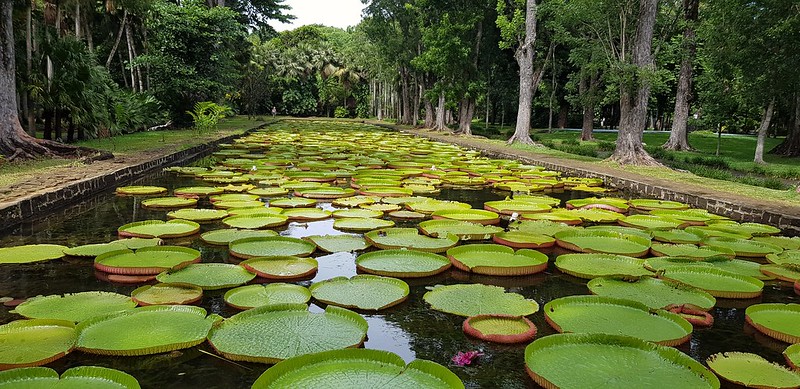
The Pamplemousses Botanical Garden is not just a feast for the eyes, but also a treasure trove of knowledge. It serves as a research center for botanists and conservationists, working towards the preservation of endangered plant species. The garden also houses a collection of medicinal plants, showcasing the important role plants play in traditional medicine. So, take your time to explore this enchanting oasis and discover the wonders of nature that await you at the Pamplemousses Botanical Garden.
9. The Mouthwatering Cuisine of Mauritius
Indulge in the tantalizing flavors of Mauritius as you savor the mouthwatering cuisine that showcases a fusion of Indian, Chinese, African, and French influences. The diverse cultural heritage of Mauritius is reflected in its culinary offerings, making it a paradise for food lovers. One of the most famous dishes is the ‘Dholl Puri,’ a delicious street food made with split peas, and served with a variety of chutneys and pickles. The filling and flavorsome ‘Biryani’ is another popular choice, made with fragrant rice, tender meat, and a blend of exotic spices. Whether you are a fan of seafood or vegetarian delicacies, Mauritius has something to satisfy every palate.
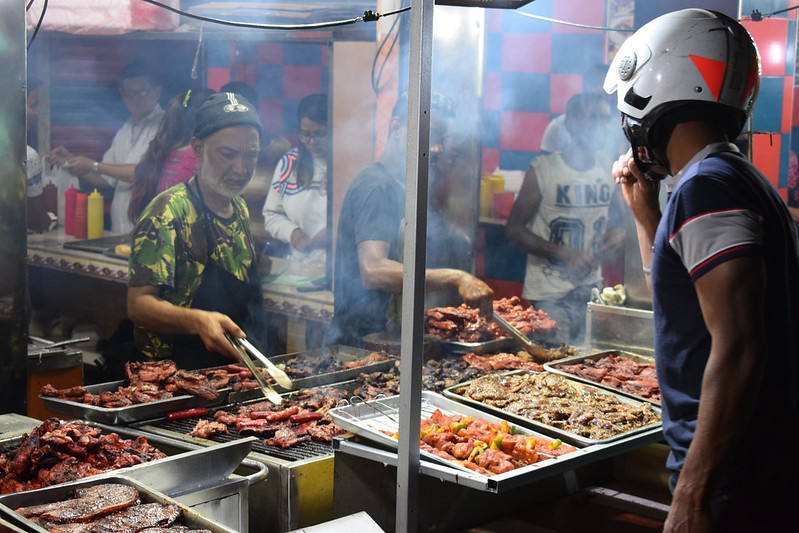
The island’s cuisine also features a variety of mouthwatering curries. The ‘Rougaille’ is a traditional tomato-based curry, often prepared with chicken, fish, or vegetables. It is known for its rich and spicy flavors that are sure to leave you craving for more. Another must-try dish is the ‘Gateau Piment,’ which are deep-fried chili cakes that add a fiery kick to any meal. For those with a sweet tooth, Mauritius offers delightful desserts like the ‘Gâteau Patate’ (sweet potato cake) and ‘Alouda’ (a refreshing milk-based drink with flavors of rose syrup and basil seeds).
No visit to Mauritius is complete without indulging in the local street food, where you can find a wide array of delicious snacks and treats. From freshly made samosas and spring rolls to ‘Farata’ (a type of Indian bread) served with curry, the street food scene in Mauritius is vibrant and full of flavor. So, be sure to explore the local markets and food stalls to experience the true culinary delights of this tropical paradise.
10. The Spectacular Beaches of Mauritius
Mauritius, known for its mouthwatering cuisine, also boasts some of the most spectacular beaches in the world. From pristine white sands to crystal-clear turquoise waters, the beaches of Mauritius are a true paradise for beach lovers. Whether you’re looking for a secluded spot to relax or an adventurous water sports destination, Mauritius has it all.
One of the most famous beaches in Mauritius is Trou aux Biches. With its calm and shallow waters, it is perfect for swimming and snorkeling. The beach is lined with casuarina trees, providing shade and a picturesque backdrop. Another must-visit beach is Belle Mare, known for its long stretch of powdery white sand and vibrant blue waters. It offers a wide range of activities, including water skiing, windsurfing, and catamaran cruises. For those seeking a more secluded experience, Le Morne beach is a hidden gem. Nestled at the foot of Le Morne Brabant mountain, this beach offers breathtaking views and a sense of tranquility.
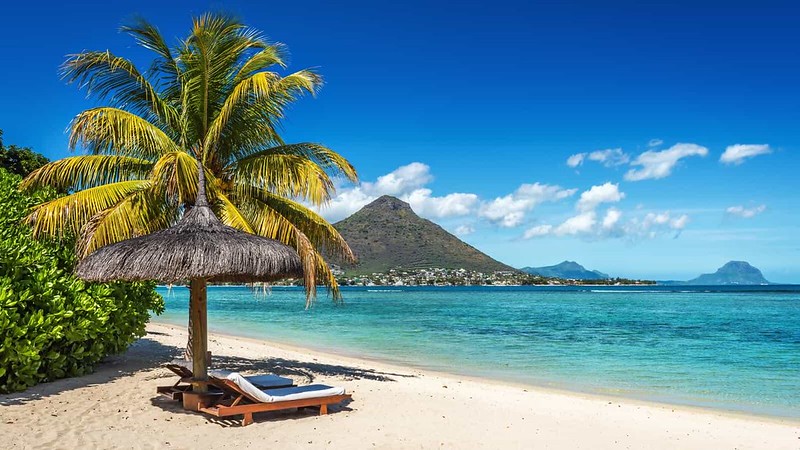
Mauritius is also home to several stunning lagoons, such as Blue Bay and Ile aux Cerfs. These lagoons are teeming with marine life and provide excellent snorkeling and diving opportunities. The underwater world is a kaleidoscope of colors, with coral reefs and tropical fish species. If you’re lucky, you might even spot dolphins or sea turtles swimming in the lagoon. The beaches of Mauritius truly offer a slice of paradise, where you can unwind, soak up the sun, and indulge in the beauty of nature.
11. The Thriving Ecotourism Industry
With its lush rainforests, abundant wildlife, and sustainable practices, Mauritius has become a haven for eco-conscious travelers seeking a unique and immersive experience. The thriving ecotourism industry in Mauritius offers visitors the opportunity to explore the island’s natural beauty while supporting conservation efforts. One of the key attractions for eco-tourists is the Black River Gorges National Park, a vast protected area that covers around 2% of the island’s total land area. Here, visitors can hike through dense forests, spot rare bird species, and marvel at breathtaking waterfalls. The park is also home to several endemic plant species, making it a hotspot for botany enthusiasts.
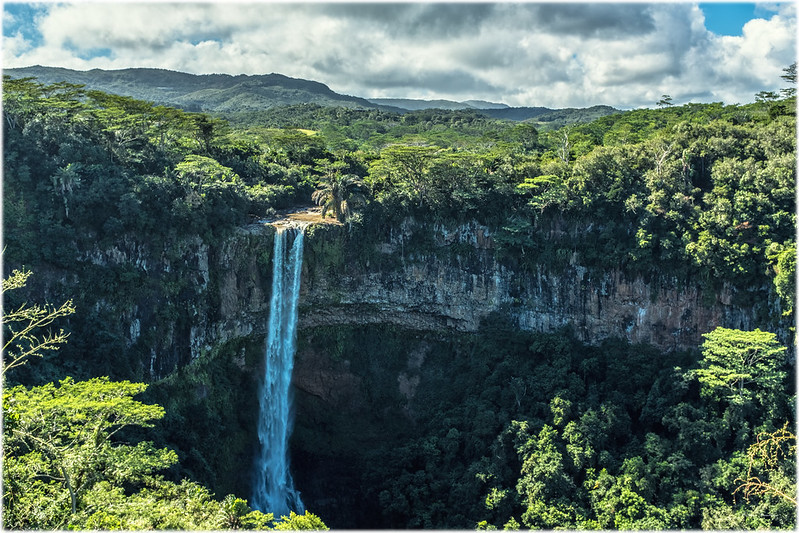
Apart from the national park, Mauritius is also known for its marine conservation efforts. The island is surrounded by stunning coral reefs, which are home to an array of colorful fish and other marine life. To protect these fragile ecosystems, several organizations in Mauritius are working towards sustainable fishing practices and coral reef restoration. Eco-tourists can participate in activities such as snorkeling and scuba diving, where they can witness the vibrant underwater world and contribute to its preservation. Additionally, visitors can also take part in beach clean-ups and learn about the importance of reducing plastic waste to protect the marine environment.
Overall, the thriving ecotourism industry in Mauritius offers travelers the chance to connect with nature and contribute to conservation efforts. With its diverse range of natural landscapes and commitment to sustainability, Mauritius has established itself as a top destination for those seeking an eco-friendly and memorable vacation.
12. The Traditional Sega Dance and Music
Experience the rhythmic beats and vibrant melodies of the traditional Sega dance and music in Mauritius. This lively and energetic art form has deep roots in the history and culture of the island. The Sega dance originated during the time of slavery when African slaves would gather in the evenings to sing and dance as a way to express their sorrow and longing for freedom. Over the years, the Sega dance has evolved into a joyful celebration of life and has become an integral part of Mauritian identity.
The Sega music is characterized by its unique blend of African, Indian, and European influences. Instruments such as the ravanne (a large drum made from goat skin), the maravanne (a percussion instrument made from dried gourd and filled with seeds), and the triangle are commonly used to create the distinctive beats and rhythms of Sega music. The lyrics of the songs are often in Creole, the local language, and tell stories of love, joy, and the everyday struggles of the Mauritian people.
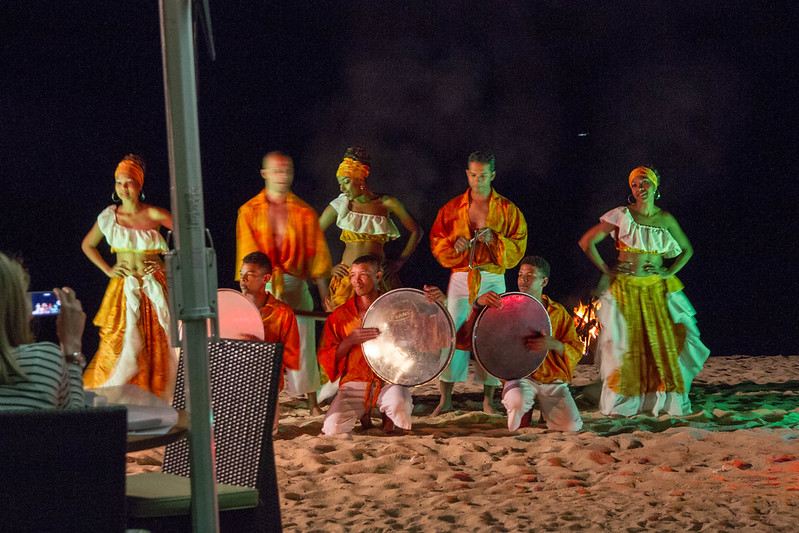
Today, Sega dance and music are not only performed during cultural events and festivals but also in hotels and resorts, where tourists can immerse themselves in the vibrant and lively atmosphere. Visitors to Mauritius have the opportunity to learn the dance moves, listen to the captivating music, and even join in the festivities. The traditional Sega dance and music have become a major attraction for tourists, offering them a unique and authentic experience of Mauritian culture. So, don’t miss the chance to sway to the beats of Sega and let the music transport you to the heart of Mauritius.
13. The Casela World of Adventures – A Paradise for Animal Lovers
Get ready to embark on an unforgettable adventure at Casela Nature Parks – it is a paradise you will not want to miss if you are an animal lover! Located in the western part of Mauritius, this nature park offers a unique opportunity to get up close and personal with a wide variety of animals. From big cats like lions and cheetahs to gentle giants like giraffes and elephants, there is something for everyone to enjoy.
One of the highlights of the Casela World of Adventures is the opportunity to interact with the animals. You can go on a walk with lions, where you will have the chance to walk side by side with these majestic creatures. Or you can opt for a safari tour and get a closer look at the animals in their natural habitat. For those who are more adventurous, there are even ziplining and canyoning activities available.
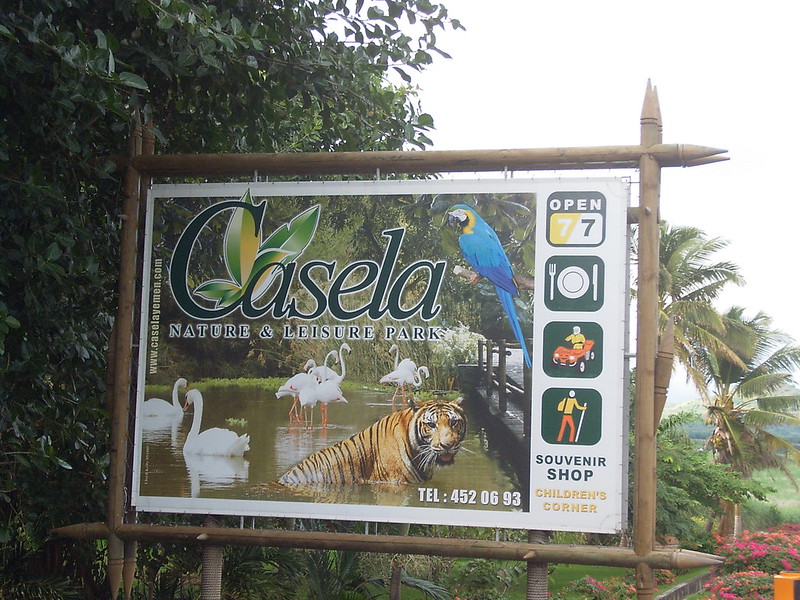
In addition to the animal encounters, the Casela World of Adventures also offers a range of other activities. You can explore the park on a quad bike or take a thrilling ride on the zipline. There are also opportunities for birdwatching, as the park is home to a variety of colorful and exotic bird species. And if you need a break from all the excitement, you can relax and enjoy a picnic in one of the park’s beautiful gardens.
Overall, the Casela World of Adventures is a must-visit destination for animal lovers in Mauritius. With its diverse range of animals and thrilling activities, it offers a unique and unforgettable experience. So make sure to add it to your itinerary when you visit Mauritius – you will not be disappointed!
14. The Spectacular Hindu Temples of Mauritius
Located throughout Mauritius, the Hindu temples are a breathtaking sight that will leave you in awe. These temples showcase the rich cultural and religious heritage of the Hindu community in Mauritius. One of the most famous temples is the Grand Bassin, also known as Ganga Talao, which is considered a sacred site for Hindus. This temple complex is located in the crater of an extinct volcano and is surrounded by picturesque mountains and lush greenery. The main attraction of the Grand Bassin is a stunning statue of Lord Shiva, standing at a height of 108 feet. Pilgrims from all over the island visit this temple to offer their prayers and seek blessings.
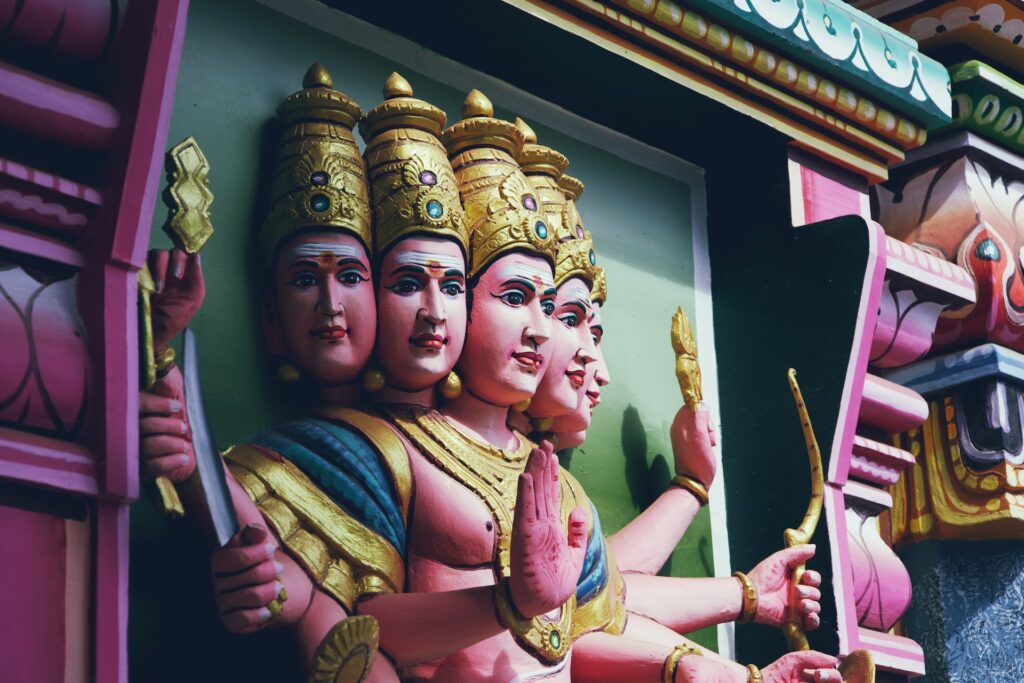
Another notable Hindu temple in Mauritius is the Sagar Shiv Mandir. Situated in the village of Triolet, this temple is dedicated to Lord Shiva and is the largest Hindu temple on the island. The architecture of the Sagar Shiv Mandir is truly remarkable, with intricate carvings and vibrant colors adorning its walls. Inside the temple, you will find numerous shrines dedicated to different Hindu deities, creating a sense of serenity and spirituality. The Sagar Shiv Mandir is not only a place of worship but also a cultural hub where various religious festivals and events take place throughout the year, attracting both locals and tourists.
The Hindu temples of Mauritius not only hold religious significance but also serve as architectural marvels that reflect the island’s diverse heritage. They offer a glimpse into the vibrant traditions and customs of the Hindu community. Visiting these temples allows you to immerse yourself in the spiritual atmosphere and witness the devotion of the locals. Whether you are a religious person or simply appreciate art and culture, the Hindu temples of Mauritius are a must-visit destination that will leave a lasting impression on your mind.
15. The Thriving Sugar Cane Industry and Rum Production
The thriving sugar cane industry in Mauritius contributes significantly to the island’s economy, with the production of rum being a notable aspect of this industry. Sugar cane has been a vital crop in Mauritius since its introduction in the 17th century. The fertile volcanic soil and tropical climate of the island create the perfect conditions for sugar cane cultivation. Today, Mauritius is one of the world’s top sugar producers, exporting its high-quality sugar to various countries around the globe.
The sugar cane industry in Mauritius not only provides employment opportunities for a significant portion of the population but also plays a crucial role in preserving the island’s natural beauty. The vast sugar cane plantations are not only visually stunning but also help in soil erosion control and provide habitats for various plant and animal species. Moreover, the by-products of sugar cane, such as bagasse and molasses, are used for electricity generation and as raw materials for the production of rum.
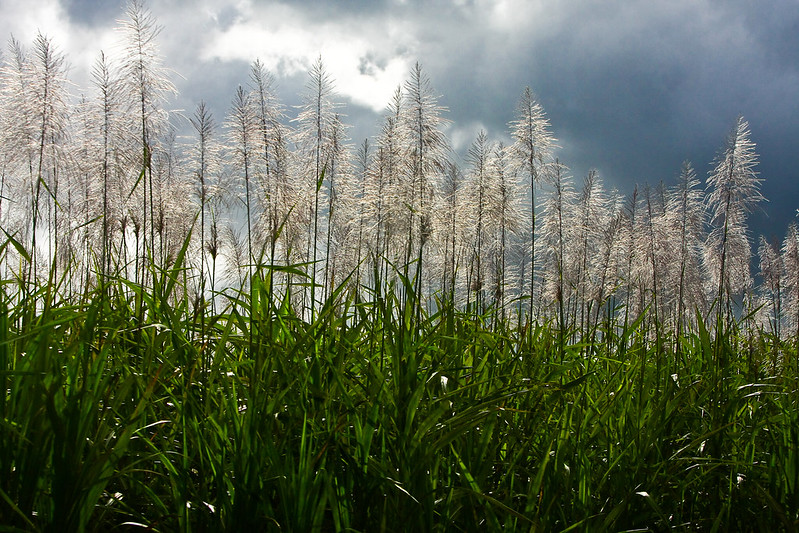
Rum production is a fascinating aspect of the sugar cane industry in Mauritius. Many distilleries across the island produce a wide variety of rum, ranging from light and fruity to dark and rich. The process involves fermenting and distilling the sugarcane juice or molasses, followed by aging in oak barrels to enhance the flavor. The result is a delightful spirit that showcases the unique flavors of Mauritius. Visitors to the island can explore the distilleries, learn about the rum-making process, and even sample different types of rum. The rum production industry not only adds to the economic prosperity of Mauritius but also contributes to its vibrant cultural heritage.
Frequently Asked Questions
The world’s rarest stamp, ‘Post Office Red,’ is from Mauritius. It was issued in 1847 and features the words ‘Post Office’ in red. Only around 27 copies are known to exist, making it highly valuable.
The underwater waterfall illusion in Mauritius is created by sand and silt being carried by ocean currents and forming a cascading effect. It’s a natural phenomenon that appears as though there is a waterfall beneath the water’s surface.
The multicultural society of Mauritius developed through a combination of historical factors, including colonization by the Dutch, French, and British, as well as the arrival of indentured laborers from India, China, and Africa.
The extinction of the dodo bird in Mauritius was largely due to habitat destruction and hunting by humans. It is memorialized through various monuments, museums, and the use of the dodo as a national symbol.
Le Morne Cultural Landscape is a UNESCO World Heritage Site due to its historical significance. It represents the resistance and struggle against slavery, as it was a refuge for runaway slaves. The site holds cultural and historical value for Mauritius.
Conclusion
In conclusion, Mauritius is a fascinating and diverse destination with interesting facts and breathtaking natural wonders. From the world’s rarest stamp to the mesmerizing underwater waterfall illusion, there is no shortage of unique experiences to be had on this beautiful island. The multicultural society of Mauritius adds to its charm, with a harmonious blend of different ethnicities and religions. The extinct dodo bird is memorialized and serves as a reminder of the importance of conservation efforts. The Le Morne Cultural Landscape, a UNESCO World Heritage Site, showcases the historical significance of the island’s slave trade.
Additionally, the traditional Sega dance and music provide a vibrant and lively atmosphere, showcasing the island’s cultural traditions. Animal lovers will be delighted by the Casela World of Adventures, a paradise that offers the opportunity to interact with a wide variety of species. The stunning Hindu temples are a testament to the island’s religious diversity and architectural beauty. The thriving sugar cane industry and rum production are integral parts of Mauritius’ economy and offer visitors a taste of the island’s unique flavors.
In conclusion, Mauritius is a truly enchanting destination that offers a wealth of interesting facts and experiences. Whether you are interested in history, nature, culture, or adventure, this island has something for everyone. Exploring its rare stamps, breathtaking landscapes, diverse society, and unique traditions will leave you with memories to cherish for a lifetime.

